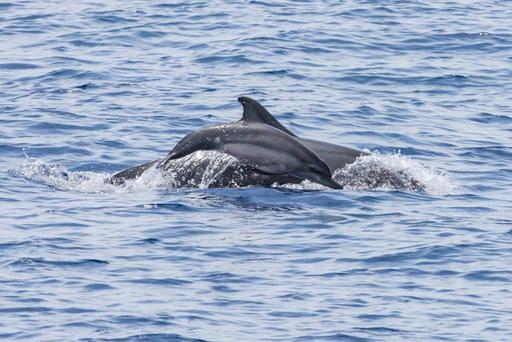By Kiley Price
August 5, 2020
Notes from the field: Protection protocol and revitalizing grasslands
5 min
Things might look a little different around here... Welcome to Conservation International’s new digital presence.

By Kiley Price
August 5, 2020
5 min
Though news headlines about the state of the planet may seem bleak, they don’t always capture the whole story. Right now, around the world, the work of protecting nature and the climate is happening in the field — and achieving small triumphs that don’t make the news.
Here are two recent conservation success stories you should know about.
The waters of Timor-Leste offer a spectacular display of coral reefs and iconic marine life, including 30 different species of whales and dolphins.
This biodiversity has made the Southeast Asian island nation a fast-growing hub for ecotourism, which provides economic benefits and job opportunities for local people. However, the tourism industry could harm the species it depends on if not done sustainably.
To prevent this, Conservation International and the Timor-Leste Ministry of Agriculture and Fisheries partnered to establish a list of responsible tourism guidelines for interactions with whales, dolphins and dugongs.
“The goal of these guidelines is to help protect the high number of whale, dugong and dolphin species and unique multi-species groups found in Timor-Leste, while encouraging sustainable tourism practices that will benefit local communities,” said Olive Andrews, a marine program manager at Conservation International who helped create the guidelines.
By creating off-limits areas designated for people, the guidelines will ensure that commercial and recreational boat operators do not disturb species while they are breeding, feeding and resting. They will also require commercial operators, vessels and tour guides to receive safety training and to register with the government of Timor-Leste for regular inspections and monitoring.
“Timor-Leste is among the best places on Earth to see an array of iconic marine species and learn about them from knowledgeable local guides,” said Andrews. “If followed effectively, the guidelines will provide a sustainable and consistent source of income for communities and educate the public to become stewards for nature, while protecting vulnerable species of whales, dolphins and dugongs in the region.”
“Back in the olden days the valleys were so beautiful, with more than enough grass for our livestock, indigenous forest, rivers overflowing with fish,” recalled Mangena Goodfriday Maqashalala, a septuagenarian known throughout his village in South Africa’s Eastern Cape for his passion for agriculture.
Over time, however, invasive wattle trees overtook the grasses livestock needed to feed. Cattle became diseased and stopped breeding. The streams dried up.
In this arid savanna, Conservation South Africa (CSA) — a Conservation International field office — is helping rural farmers restore their degraded lands. The work is funded by Toyota, the global car manufacturer, whose grant program has been supporting these conservation efforts since 2017. Toyota is investing in South Africa’s next generation of rural, communal farmers who have historically been forgotten in the country’s turbulent political past, enabling them to improve their knowledge and skills — and ultimately their earnings — in a way that is ecologically sound.
“Toyota South Africa Motors (TSAM) is first and foremost a corporate citizen and its values — among others — are premised on respect for people and the communities in which they live,” said Mzo Witbooi, a corporate communications manager at TSAM. “The project aims to encourage each Toyota region — including TSAM — to face up to global as well as local environmental issues and take an active role in creating a better world.”
Through this partnership, CSA has held a series of trainings and workshops with communities and grazing associations to teach farmers to clear invasive species, restore grasses and streams, recognize and treat livestock diseases, and adopt more sustainable land practices, such as rotational grazing.
The end result: thriving grasslands and healthy cattle that fetch significantly higher prices at market, motivating farmers to stay local and care for the land — sustainably.
Kiley Price is a staff writer at Conservation International. Want to read more stories like this? Sign up for email updates here. Donate to Conservation International here.
Cover image: Dolphins in Timor-Leste (© Grant Abel)
Further reading: